"Ohio" by Crosby, Stills, Nash & Young (1970)
My favorite protest songs of the 60s and early 70s
Welcome, everyone, to the tenth post in this series about my favorite protest songs from the sixties and early seventies.
So far we’ve heard quite a variety in terms of artist, style, and message:
“Blowin’ in the Wind” by Bob Dylan (1963)
“Masters of War” by Judy Collins (1963)
“Eve of Destruction” by Barry McGuire (1965)
“For What It’s Worth (Stop, Hey What’s That Sound)” by Buffalo Springfield (1966)
“Gimme Shelter” by the Rolling Stones (1969)
“Sweet Cherry Wine” by Tommy James & the Shondells (1969)
“Give Peace a Chance” by the Plastic Ono Band (1969)
“Big Yellow Taxi” by Joni Mitchell (1970)
“Ball of Confusion (That's What the World Is Today)” by the Temptations (1970)
I’ve also sent you Jackie R’s post sharing a song that makes fun of protest songs, as well as NickS’s post asking “What makes a good protest song?” in which he gives his own list of favorites — and where the Comments section has a discussion about this topic, which I’m sure Nick would be happy to have you join.
There will be three more of my favorite protest songs after this, followed by a list of honorable mentions that are also deserving of our attention. I’ll end with a summary post looking across the series and seeing what, if anything, this motley collection of protest songs tells us.
Today I must warn you that this particular post has been a hard one for me to write, and may be a hard post for you to read. As we said back in those days, things are now going to ‘get real.’
Protest song of the day
“The message in ‘Ohio’ was very simple,” Graham Nash said in a 1990 interview. “When the American administration wanted to bomb Cambodia secretly and the news got out, the students demonstrated at Kent State University against the bombing of Cambodia. The Governor sent out the National Guard, foolishly with live ammunition, and the National Guardsmen opened fire on the students and killed four of them stone dead. And that photograph of the bleeding boy [Jeffrey Miller], with the young girl [Mary Ann Vecchio] bent over him, must be in everyone’s consciousness that existed at that time or have seen that photograph since.”
The future bassist of the new wave band Devo, Gerald Casale, was there that day and described what happened:
“All I can tell you is that it completely and utterly changed my life. I was a white hippie boy and then I saw exit wounds from M1 rifles out of the backs of two people I knew… Two of the four people who were killed, Jeffrey Miller and Allison Krause, were my friends. We were all running our asses off from these motherfuckers. It was total, utter bullshit. Live ammunition and gasmasks — none of us knew, none of us could have imagined ... They shot into a crowd that was running from them!”1
He also descibed the aftermath. “In the paper that evening, the Akron Beacon Journal said that students were running around armed and that officers had been hurt. So deputy sheriffs went out and deputized citizens. They drove around with shotguns and there was martial law for ten days. 7 pm curfew. It was open season on the students. We lived in fear. Helicopters surrounding the city with hourly rotating runs out to the West Side and back downtown. All first amendment rights are suspended at the instance when the governor gives the order. All of the class action suits by the parents of the slain students were all dismissed out of court because once the governor announced martial law, they had no right to assemble.”
Chrissie Hynde, future lead singer of The Pretenders, was also a Kent State student at the time and present at the student demonstration. In her autobiography, Reckless, she remembers that “They were all on one knee and pointing their rifles at ... us! Then they fired.”2
Two of the slain students were engaged in the protest, but two were simply walking across campus to get to their next class:
Sandra Scheuer - age 20, from Youngstown, OH - shot while walking to her next class
Allison Krause - age 19, from Cleveland, OH - shot while engaging in protest
Jeffrey Miller - age 20, from Plainville, NY - shot while engaging in protest
William Schroeder - age 19, from Lorain, OH - shot while walking to his next class
The National Guardsmen were shooting to kill, not to scare or warn, judging not only by the slain but also by the injured, all of whom were at a significant distance from the soldiers (between 71 to 750 feet):
Joseph Lewis Jr. - hit twice, in his right abdomen and lower left leg
John R. Cleary - wound in upper left chest
Thomas Mark Grace - hit in his left ankle
Alan Michael Canfora - hit in his right wrist
Dean R. Kahler- wounded in the back and permanently paralyzed below the waist
Douglas Alan Wrentmore - hit in the right knee
James Dennis Russell - hit in the right thigh and grazed on the forehead (and at a distance from most of the other students)
Robert Follis Stamps - hit in right buttock
Donald Scott MacKenzie - wounded in the neck.
Neil Young got the news about the shootings while hanging out in northern California, as he recalled during a concert:3
“We’re just cruising along. Things are good. Writing songs about love. I was visiting one of my friends in the Redwoods, after we’d had all this great fun and played all this music that people love. And we’re hanging out there. And we’re up in this canyon at this log cabin, and it’s beautiful… There’s redwoods all around it, and a creek, and birds, and animals are everywhere. And it’s the last house on the road. So we’re sitting there, and we just got in from L.A., and we had this news that some kids had gotten shot by the National Guard in Ohio. We were kind of overcome with grief and sadness. So everyone’s looking around and everything’s so beautiful, and we’re sitting here and everything’s so great, and I’m just realizing how it’s all changed.”
Graham Nash explains what happened next:
“Neil and David [were] up in northern California watching the news and seeing the four students dead at Kent State. Crosby telling me that he saw Neil’s face. He saw Neil go off into the woods. Neil came back an hour later and played him ‘Ohio.’ Crosby called me and Stephen. We were in Los Angeles at the time. He said Neil has written this song, you’re not going to believe it. We’ve got to get in the studio right away. Stephen and I booked the Record Plant here in Hollywood. Neil and David came down. We went into the studio, we cut ‘Ohio,’ we cut the B side, ‘Find the Cost of Freedom.’ Ahmet Ertegun, who was the president of Atlantic at that time, was at the session. We gave him the master. He took it back to New York. That single was out on the street in ten days.”
“We killed our own single of ‘Teach Your Children,’ which is my song, and we didn’t care. We didn’t care about any of those rules. We didn’t care about the record company saying, ‘Listen, you don’t want to do this. Let “Teach Your Children” get up there, do its thing, and then, you know, a couple of months later bring it out.’ What we wanted to do was bring it out instantly now. We were angry now. The kids were angry now. We wanted to speak and scream about this now. We wanted to put that record out on top of our other record, and we killed it stone dead, and we didn’t care.”
The song’s lyrics were as immediate and ruthless as the killings: “Gotta get down to it, soldiers are cutting us down… What if you knew her and found her dead on the ground.”
As you can see in the interview (brief clip below), Graham was absolutely outraged in his understated English way by what happened. “We were killing our own children. And we were killing them in support of a secret policy of slaughter on a mass scale in Cambodia. And the youth were not gonna take it. They gave their lives to protest it. And Kent State was the very essence of the youth movement for me. It was the very essence of youth saying ‘This is wrong, I’m going to say something, even if I may die.’ And four of them did. And that was the story behind Kent State.”
The bombing in Cambodia was indeed the trigger for the latest protests, as Graham stated, but it’s also important to note that student demonstrations had been going on for years as young American men were forcibly conscripted to fight in a war that many believed to be illegal and immoral, and as the casualties from the war mounted, and as photos and videos of the carnage were appearing on the six o’clock news programs that everyone in the country watched.
For the students, being draft age, this was incredibly personal. An estimated 570,000 young men were classified by the government as draft evaders, with around 210,000 formally charged, and an estimated 60,000 to 100,000 young men left the country to avoid being conscripted, mostly to Canada and Sweden. A draft resistance movement involving a number of organizations sprang up, providing advice on how to confront or avoid the draft. Public burning of draft cards and finding ways to fail the required medical exam became common. Songwriter, musician, and record producer Al Kooper discusses this in his fascinating autobiography, Backstage Passes and Backstabbing Bastards.
It should also be mentioned that Australia sent over 15,000 soldiers to fight in the Vietnam War, and a parallel draft resistance movement grew there during the second half of the sixties.
For many of us, it also became incredibly personal when a family member or friend was conscripted and sent to Vietnam. (My cousin was there — and thankfully returned.)
By the war’s end in 1975, an estimated 60,000 Americans had been killed and over 300,000 wounded in action. The estimates of total deaths — Vietnamese, Laotian, Cambodian, American, and Australian — which includes many civilians, range from 1.4 to 3.6 million.
The survivors (both combatants and civilians) were not necessarily the lucky ones, as many suffered serious health issues — cancer, severe psychological and neurological problems, and birth defects in their children — as a result of U.S. chemical warfare involving the widespread and intense spraying of Agent Orange, which contained the toxic and deadly chemical dioxin.
I can also say, from experience working as a volunteer on a crisis hotline in the mid-1970s, that Vietnam veterans felt condemned and abandoned by American society after serving in a war promoted as imperative to protect democracy and the American way of life.4 An estimated 150,000 to 200,000 Vietnam veterans have taken their own lives since returning from the war — about three times the number of deaths from the war itself.5
Rather than deter or discourage further protest, as seemed to be the intention, the fatalities at Kent State led to even bigger protests and a nationwide student strike across hundreds of college campuses (above), and to a massive protest against the war and the shootings on May 9th in Washington, D.C., involving an estimated 100,000 people.
Six days after that, on May 15, two more students were killed (below) and 12 injured at Jackson State University in Jackson, Mississippi when 40 state highway patrolmen fired 460 shots into a crowd of students in front of a women’s dormitory. The deceased were:
Phillip Lafayette Gibbs - 21, a junior
James Earl Green, 17 - a senior at nearby Jim Hill High School
U.S. President Richard Nixon subsequently established the President’s Commission on Campus Unrest to investigate what became known as the Kent State Massacre and the Jackson State Killings. The Commission found in the case of Kent State that “the indiscriminate firing of rifles into a crowd of students and the deaths that followed were unnecessary, unwarranted, and inexcusable,” and in the case of Jackson State “that the 28-second fusillade from police officers was an unreasonable, unjustified overreaction.... A broad barrage of gunfire in response to reported and unconfirmed sniper fire is never warranted.”6
The Commission did not address the issue of why the shootings happened, but no one could claim ignorance if they watched the national news, passed by a newsstand, or heard the song “Ohio” playing on the radio, especially once the song reached the Billboard Top 20 in both the US and Canada and was in regular rotation on both AM and FM playlists.
It was a tragic and fraught time that divided the country and even the classroom. I vividly remember a discussion of the Vietnam War in my 9th grade Social Studies class that became very heated and challenged the teacher in keeping it from going completely off the rails.
Let’s listen to “Ohio,” which some believe to be the greatest protest song of that era. I’m going to offer you three listening options. You can find the official version of the studio recording here.
For those of you who didn’t live through that traumatic period, or those who did but wish to be reminded, I offer this version of the song accompanied by a photo montage of the peace demonstrations and the Kent State shootings (produced by Hard Rain Productions).
For those of you who wish to hear Neil Young do a live concert performance of the song he wrote in immediate response to the Kent State shootings, with an introduction to the context in which he did so (which I’ve quoted above), the version below may be of interest. His powerful and affecting performance is also accompanied by a photo montage.
We’ll hear another anti-war song next, and Neil Young was right. Everything changed after Kent State.
Song credits
Songwriter - Neil Young
Producers - Crosby, Stills, Nash & Young
Musicians:
David Crosby – vocals; rhythm guitar
Stephen Stills – vocals, guitar
Graham Nash – vocals
Neil Young – vocals, guitar
Calvin Samuels – bass
John Barbata – drums
Knight, Brian L. "Oh Yes, It's Devo: An Interview with Jerry Casale". The Vermont Review. Retrieved from Wikipedia entry on “Kent State shootings” on September 20, 2024.
Retrieved from Wikipedia entry on “Kent State shootings” on September 20, 2024.
This is Neil’s introduction to the song in a concert, not sure which concert, but you can watch it above (last video in the post).
A number of films dealing with the repercussions of the war for Vietnam veterans eventually came out, including The Deer Hunter (1978), Coming Home (1978), and Born on the Fourth of July (1989).
https://www.vietnamfulldisclosure.org/ketwig-veterans-commit-suicide-killed-vietnam/
Extracted from https://en.wikipedia.org/wiki/Kent_State_shootings on September 20, 2024.

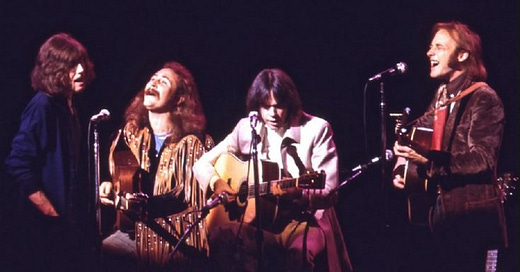



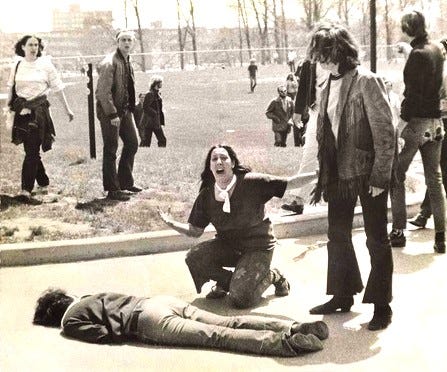
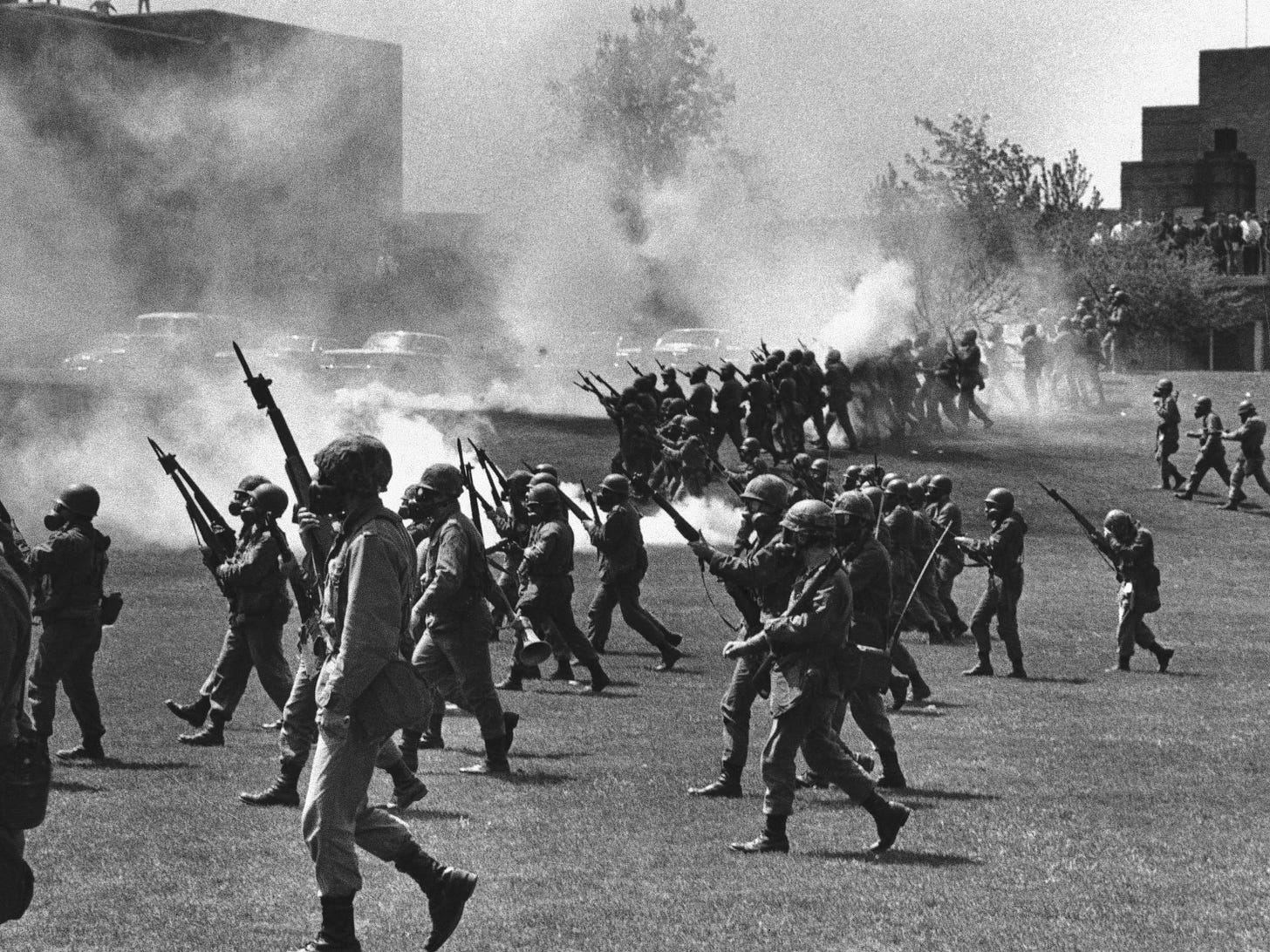
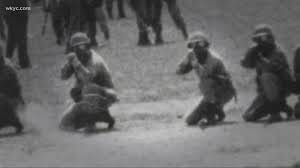
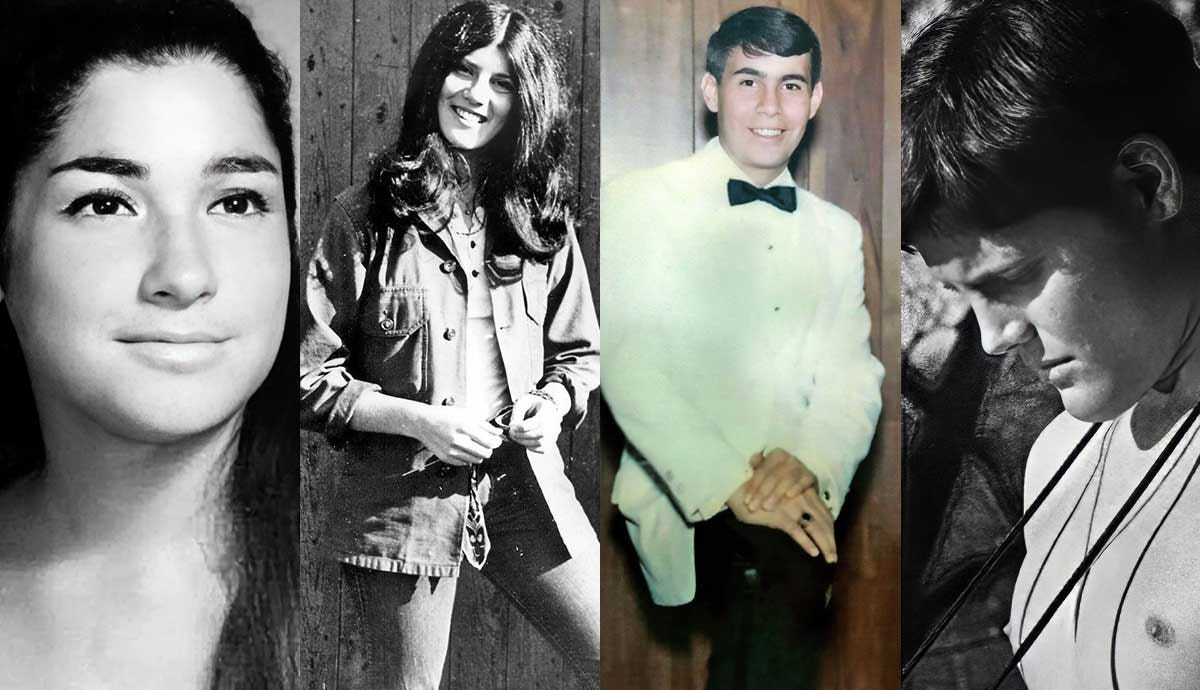
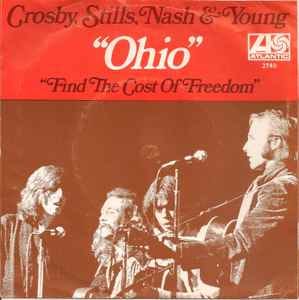
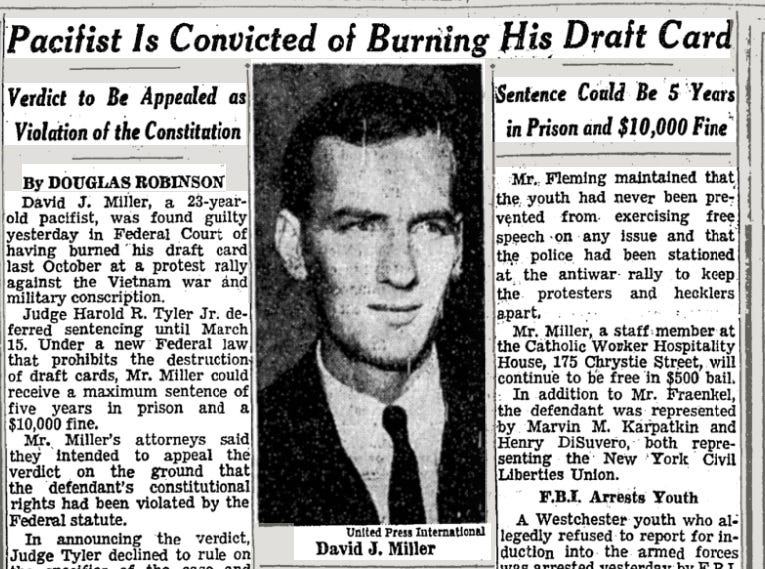
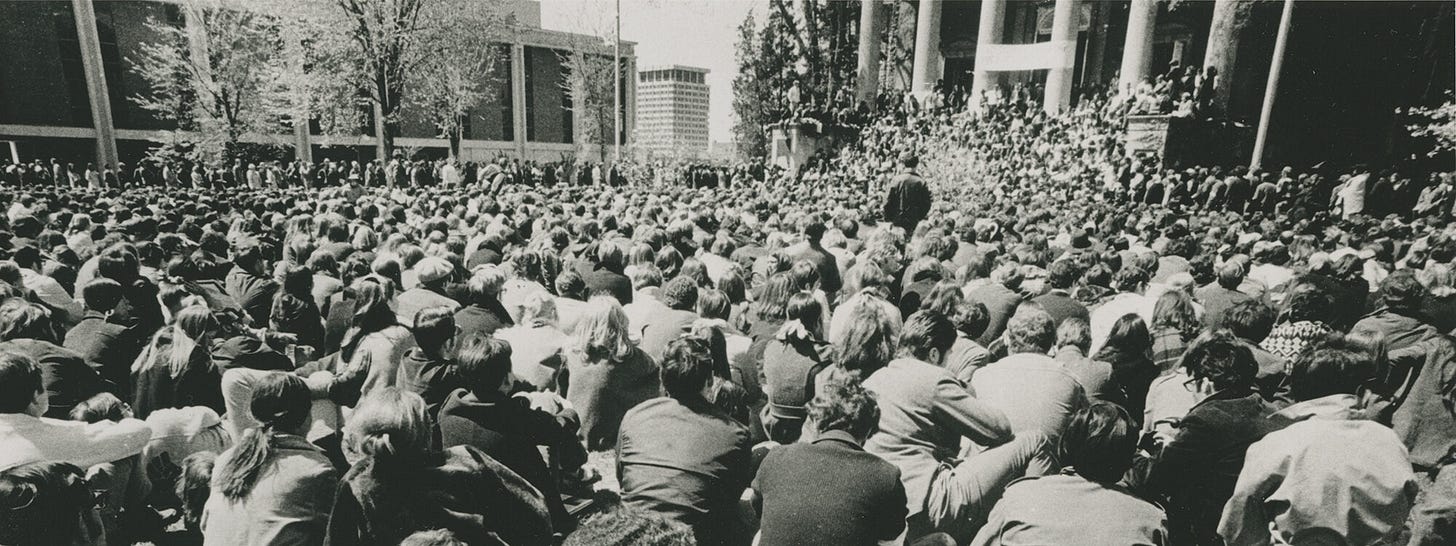
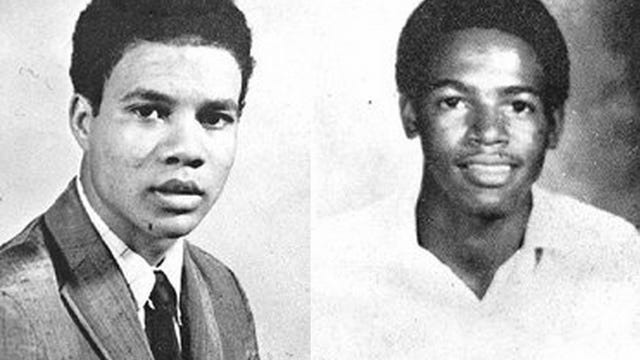
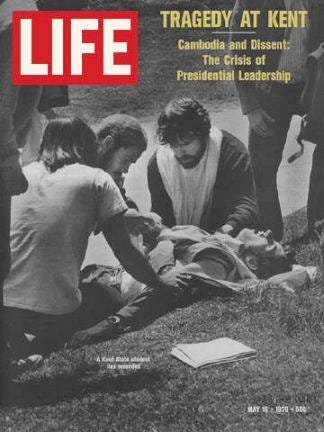
Trust a Canadian to write the definitive musical condemnation of a horrific American event.
Thank you so much for the sad but oh so real memory.